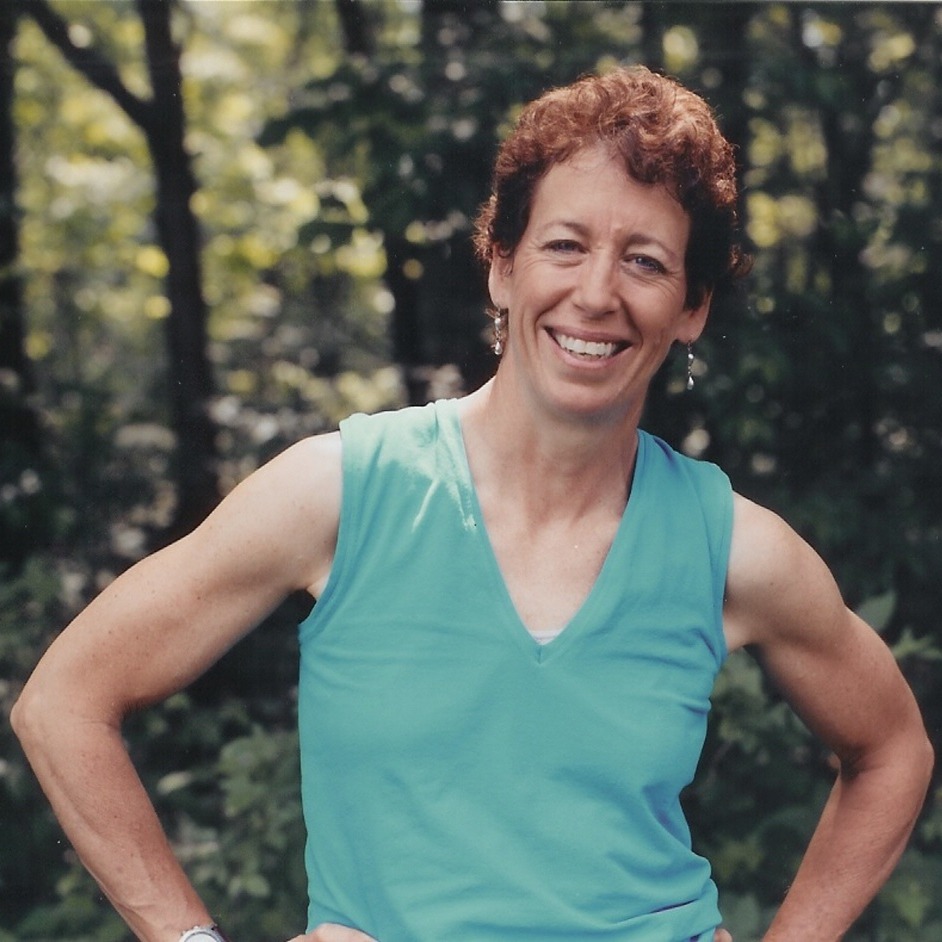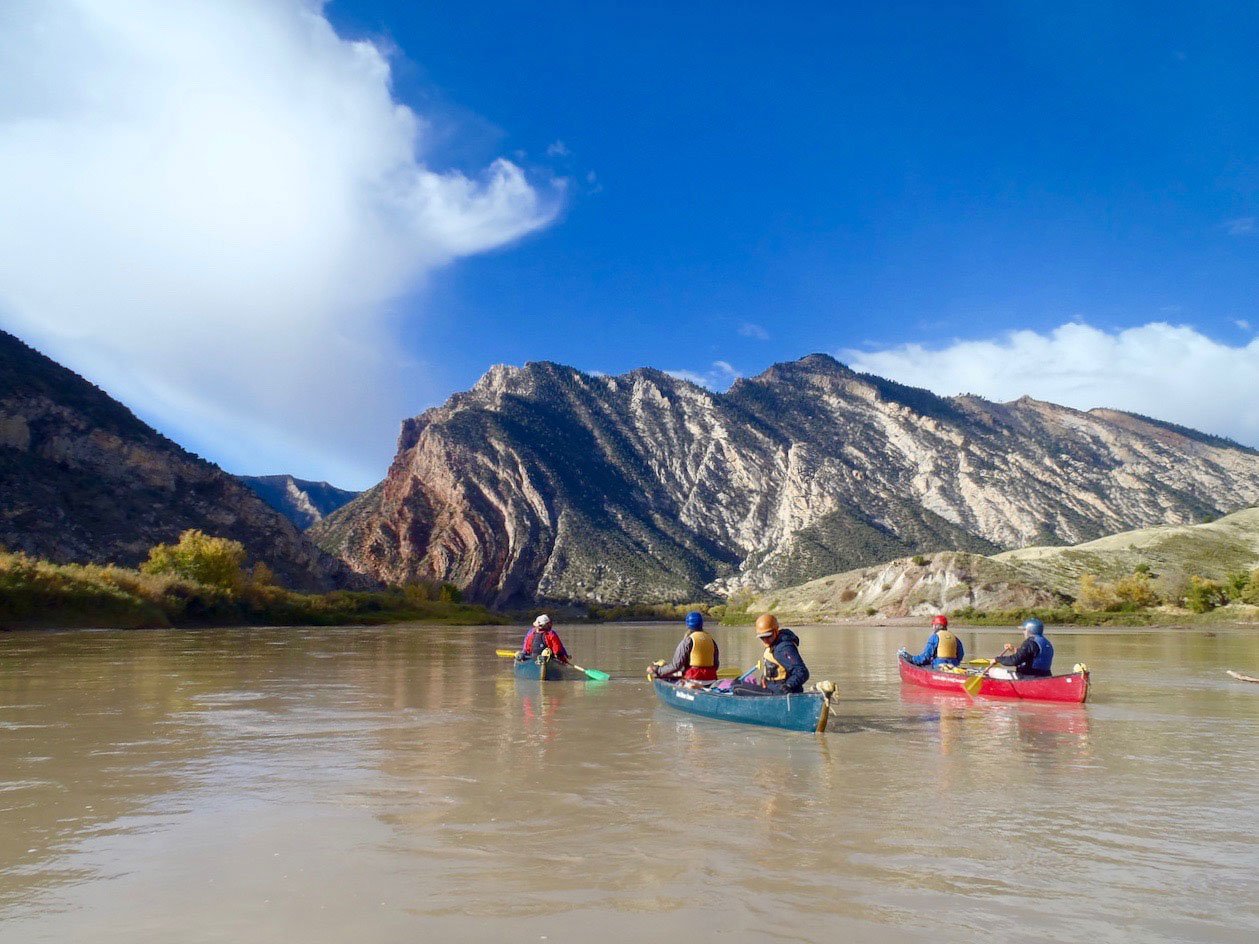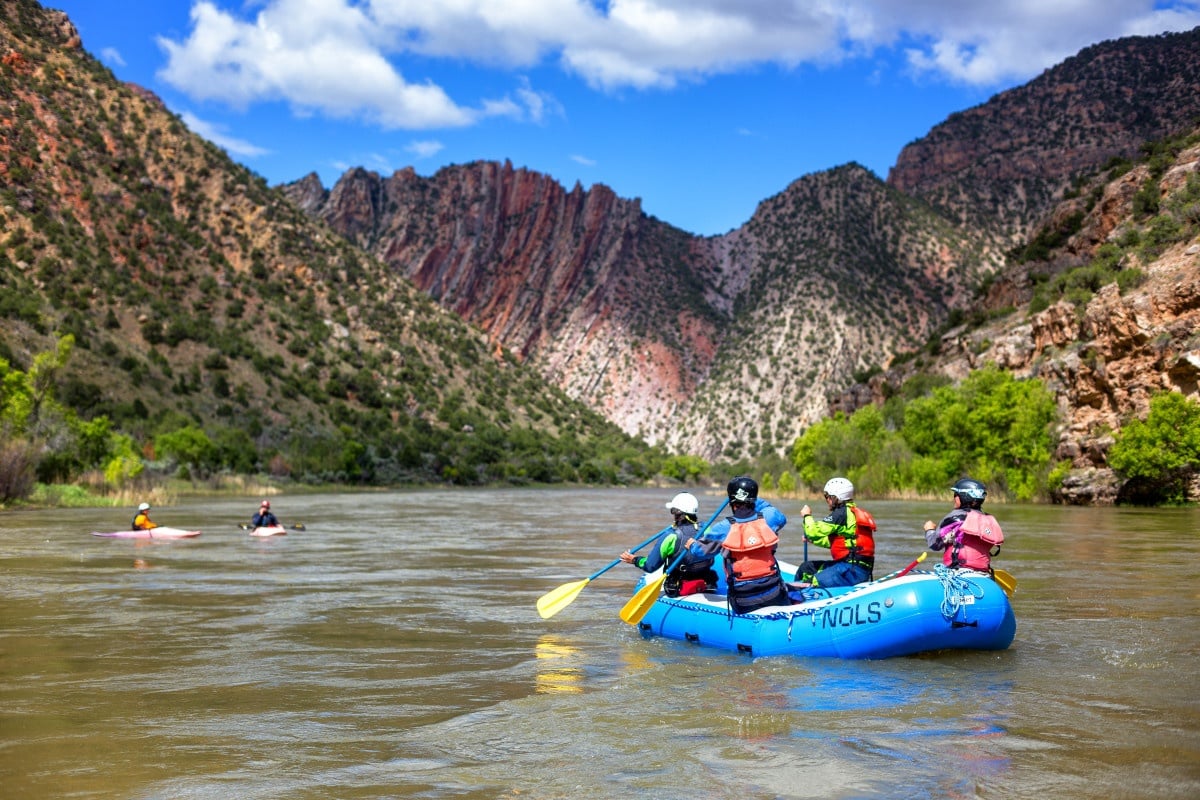
On June 8, 1869, John Wesley Powell and his expedition floated down the Green River through the Gates of Lodore—a narrow, towering cleft worn in the deep red rock of what is now western Colorado.
They were not the first to enter the canyon—Native Americans had lived in the area for thousands of years, and the early 1800s saw numerous explorations by trappers. But for Powell, it felt completely unknown.
Lodore Canyon has retained that magic through the present day; its 44 miles are a place removed from the world.
This is why many NOLS river expeditions make the journey through this area—it's a place unlike any other.
The deep red cliffs hide ancient pictographs, and mysterious side canyons rise from the banks, devoid of footprints.
“It feels special, like you’re discovering a new place every night,” says Laura Hudecek, an instructor and former program supervisor at the NOLS River Base.
How River Courses Build up to Class III Paddling
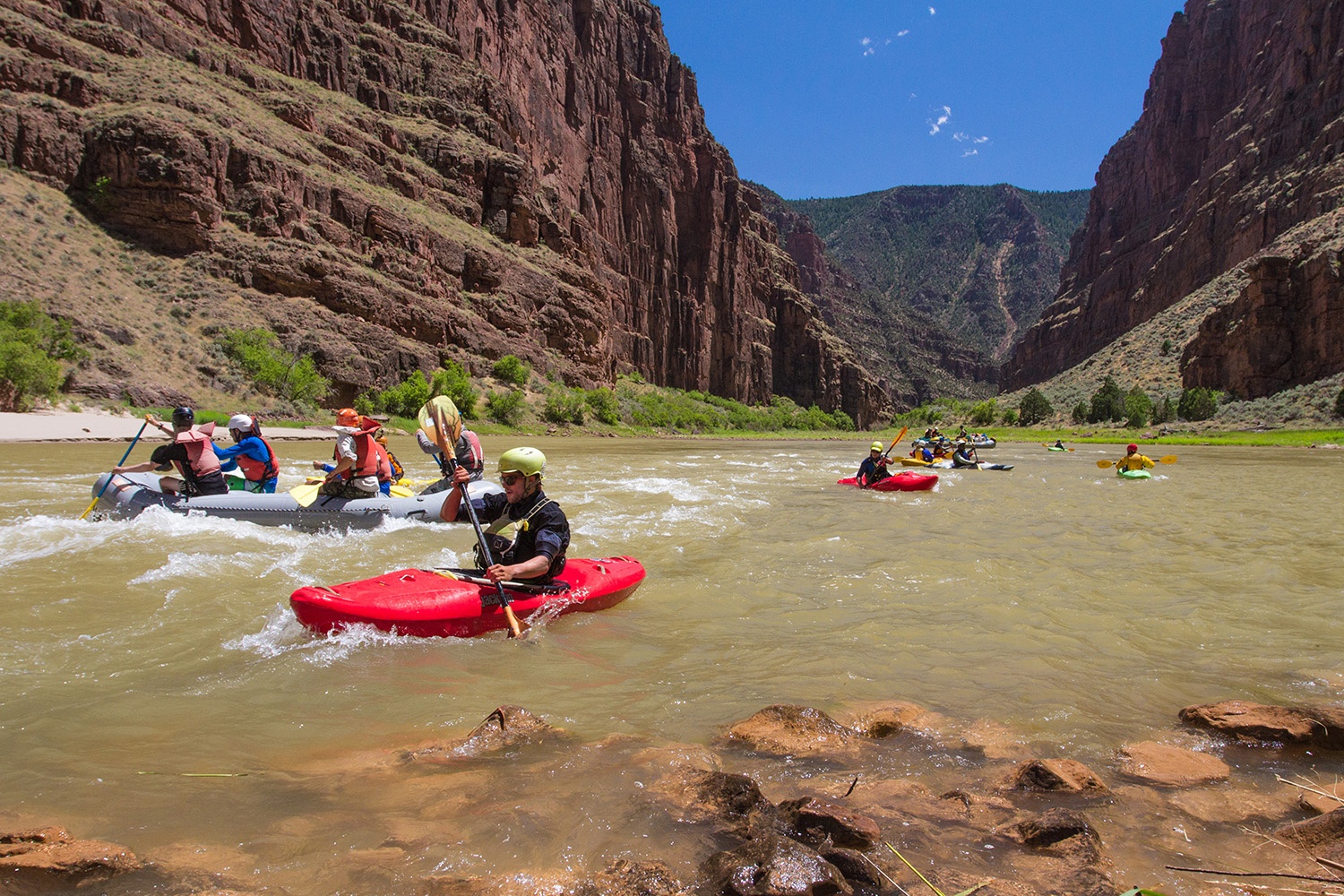
Lodore Canyon lies within Dinosaur National Monument. A few miles from where the Green River spills from the monument’s western edge lies the NOLS River Basein Vernal, UT.
Vernal is the hub for kayaking at NOLS. It lies between the take-out at the bottom of Lodore and the put-in for Desolation and Gray Canyons (better known as Deso).
Together, those 128 miles of river form one of the best progressions for teaching novice whitewater boaters in the western United States.
Deso starts out flat and smooth, then builds along its 84-mile length to a technical series of Class III rapids. Courses either canoe or take rafts and kayaks.
Students paddle this stretch, taking their time moving through the skills progression for paddling, then get picked up and drive north to the Gates of Lodore (sometimes with a stopover at the River Base before journeying on).
Here, the whitewater picks up where it left off.
“It speaks to the quality of this outdoor classroom,” says instructor Nate Ostis, who authored the award-winningNOLS River RescueGuide.
“We’re able to get students paddling Class III in kayaks inside two weeks. In rafts is one thing, but big whitewater alone in a kayak? That is a big experience for a student. We hand over a lot more independence in kayaks than in other courses, because students have numerous opportunities to learn and practice. The river is a dynamic environment, and while they are in the middle of a rapid they have to make consequential decisions for themselves.”
Hudecek notes that the rest of the time on the river, courses travel in big groups, which provides excellent leadership challenges of a different nature.
“We move as a large group. Cook as a large group. It feels almost too big—sometimes managing that many people as leader of the day feels like chaos. But it’s so representative of many of the leadership situations they’ll encounter in the rest of their lives.”
History of the River Program
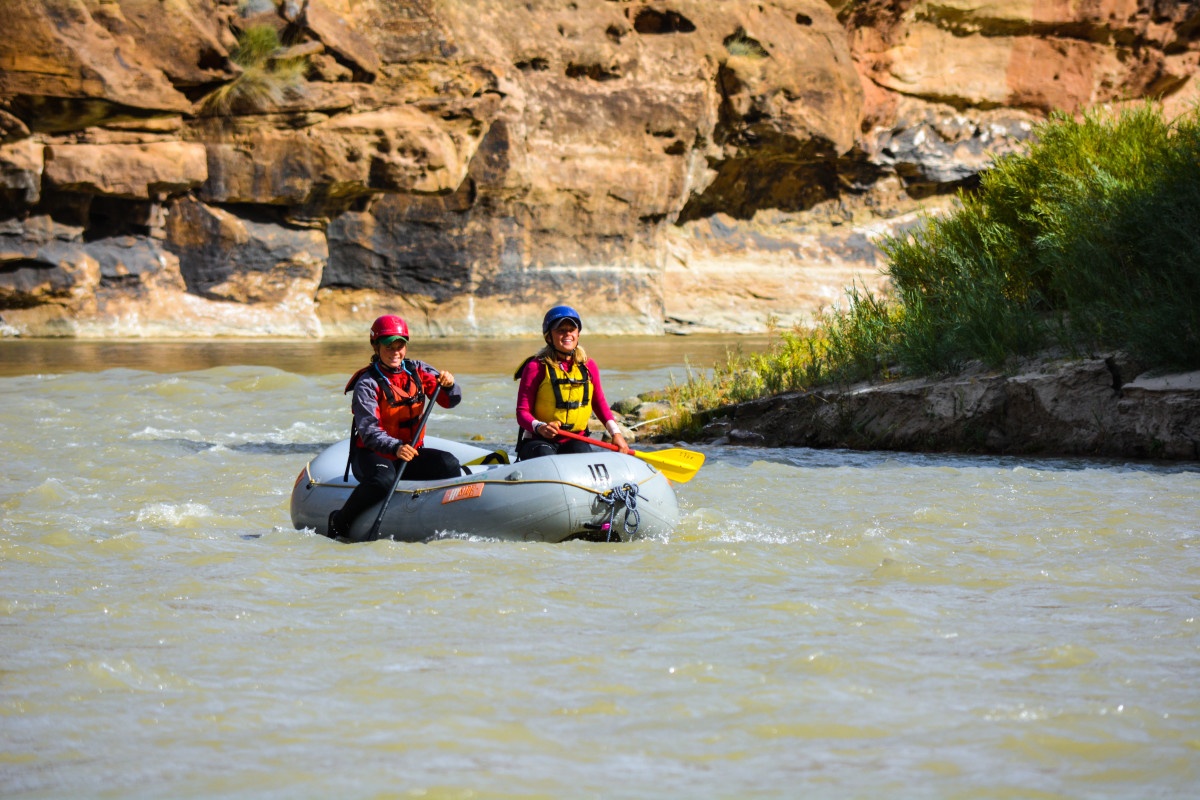
The NOLS river program in Utah started in the late 1980s under then-Wyoming branch director Dave Neary.
“At first, we didn’t have our own permit, so we were subcontracting through commercial outfitters to run semester courses on the river,” said Pip Coe, who ran Vernal with her then-partner Mark Donahue from 1993 through 1997. An instructor or two would go along on the trip, remembered Neary. However, the contractors didn’t necessarily share the same values as NOLS instructors.
In about 1990, instructor Eric Sawyer helped the school obtain its first permit, for Deso, from a commercial outfitter. About the same time, a different outfitter sold the school a permit for Dinosaur. With the ability to run its own trips, the school rented a warehouse in Vernal to store gear. Nancy Siegel oversaw the program for the first two years until Coe and Donahue took over.
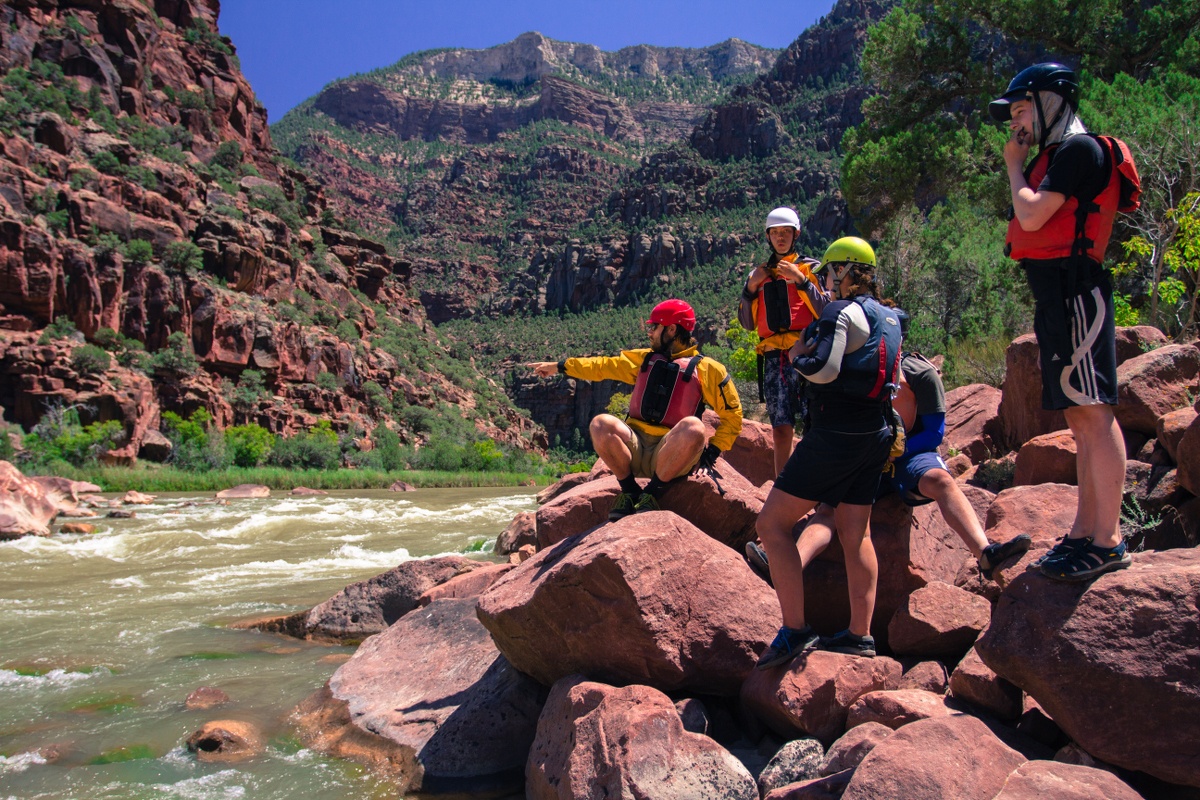
In 1996 the school acquired a 40-acre property on the east side of town that houses the base to this day. After Coe left Vernal in 1997, Dave Stinson and Jhala French took over, followed by Phil Henderson in 2002. Pam Rosal took over in 2013, and still runs the base today.
NOLS also has permits on the San Juan River in southern Utah, and the Yampa.
“The Yampa is not only one of the largest undammed rivers in the US, but…the only undammed river in the entire Colorado River watershed,” said Frank Preston, a senior instructor.
“To travel down these rivers is to experience the arteries and the veins of our planet,” said Ostis.
“Keeping those veins and arteries free from blockages has not always been easy; the Colorado River and its tributaries have been ground zero for many of the most heated conservation battles of the twentieth century, and students can easily see in the landscape examples of both wins and losses.”
It's certainly a way to travel that has no comparison.
See all NOLS whitewater expeditions.
Editor's note: Essay adapted from A Worthy Expedition: The History of NOLS.
- Canoeing
- Whitewater
- Skills
- Kayaking
- Whitewater Rafting
- Salmon River
- Whitewater Canoeing
- Nols River Base
- Vernal
- Stories
- Locations
- Rafting
Written By
Kate Dernocoeur
Kate Dernocoeur is a journalist, non-fiction writer and two-times NOLS alumni. She is the author of A Worthy Expedition: The History of NOLS. Find her writing at www.katedernocoeur.com


